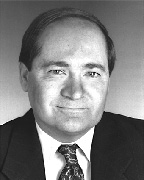I recently met with a local architect who has incorporated a variety of our window film products in his new construction and renovation projects. He commented that not a day goes by without a conversation regarding a client's desire or mandate to conserve energy or meet stringent LEED certification goals. I would expect this "conservation conversation" to be noted historically as this century's new paradigm.
Since 3M Company's patent application 1961 for a metallized solar control film, advances in films to reduce heat gain in warmer months and heat loss in colder months have been significant. Ultraviolet light control films, low reflectivity, high optical clarity and shatter-resistant films have answered market demand. Current window film products not only conserve energy, they reduce fading, increase comfort by reducing temperature imbalances, reduce glare, and improve a building's security and overall aesthetics. Applied to various types of glass, they produce customized and economical glazing systems to obtain desired effects.
Additionally, a variety of technologies are used in the manufacture of films today. American Window Film, Inc. offers 3MWindow Films that utilize multilayered optical and nano-technology, and metallic as well as nano-ceramic technologies. Nano-technology works with materials 1/4000ths of the width of a hair, allowing the delivery of strong, high performance and optically clear films consisting of hundreds of layers - at 1/2 the thickness of a Post-It Note.
3M's traditional high performance energy conservation (sun control) films use a reflective metallized layer that is very efficient at reducing heat loss in colder months and heat gain in warmer months. Some feature unique Wavelength-Selective metals that block more of the solar spectrum than conventional metals enabling better performance and light transmission.
As these films are highly reflective, 3M also offers a dual reflective Night Vision Film with less reflectivity and slightly less heat rejection.
Metallic technology can help prevent information piracy by blocking interception of wireless communication, however, metals can corrode over time in moist conditions. With multiple technologies available, there are plenty of options for long lasting films that will not interfere with cell phone signals and Wi/Fi transmissions. Multi-layered optical nano-technology and nano-ceramic films use no metals -- providing low reflectivity, high clarity and good heat rejection.
For architects looking to increase a building's energy efficiency, many 3M Window Films meet LEED Energy and Atmosphere Prerequisites and qualify for LEED credits. Qualifying categories for credits include "Indoor Environmental Quality", "Daylight and Views" and "Optimize Energy Performance" among others. In addition, the National Fenestration Rating Council has certified a range of the 3M Window Films. NFRC certification provides affirmation that 3M's films meet rigid energy performance factors.
Commercial customers justify their investment in window film by the utilities cost savings they provide. Utilizing E-Film, an algorithm-based energy simulation program supported by the DOE, American Window Film, Inc. can provide a comprehensive energy analysis report that includes Return-On-Investment projections for large commercial customers. Many installations pay for themselves within three years conservatively.
3M Company conducts rigorous tests to calculate and monitor film performance. Prolonged testing assures long-term film durability, color stability, adhesive performance and resistance to metallic corrosion. Tests performed on 3M films are published by the American Society for Testing and Materials and include: ASTM E-308, ASTM-424 and ASTM G-90. Specific 3M Window Films meet the requirements for a Class A Interior Finish for Building Materials for both Flame Spread Index and Smoke Developed Values per ASTM E-84. Their 4-mil security film passes the 400 foot-pound impact level of ANSI Z97.1 standard with modifications for higher impact levels.
Window film has come a long way since its first patent introduction in 1961. Advancements in window film technology have provided all kinds of options -- meriting an important place in our "conservation conversations" and providing a host of additional benefits to improve buildings efficiency, security and aesthetics.
Peter Davey is president of American Window Film, Inc, a 3M Window Films Authorized Dealer, Prestige Dealer Network, in Foxboro, Mass.
Tags:
3M Window Films products have become more than a conservation conversation
October 28, 2010 - Spotlights









